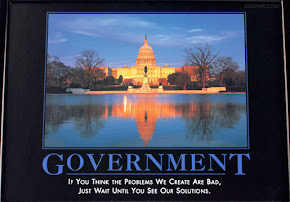Tuesday, June 8, 2010
Space Stations: The New Frontier for Entrepreneurs
With the private sector seeing business profits a possibility, the space race is about to get heated. I envision progress in space will accelerate now that Government will be relinquishing the lead. It is an exciting time to be alive.
Excerpt: NORTH LAS VEGAS, Nev. — At the Bigelow Aerospace factory here, the full-size space station mockups sitting on the warehouse floor look somewhat like puffy white watermelons. The interiors offer a hint of what spacious living in space might look like.
“Every astronaut we have come in here just says, ‘Wow,’ ” said Robert T. Bigelow, the company founder. “They can’t believe the size of this thing.”
Four years from now, the company plans for real modules to be launched and assembled into the solar system’s first private space station. Paying customers — primarily nations that do not have the money or expertise to build a space program from scratch — would arrive a year later.
In 2016, a second, larger station would follow. The two Bigelow stations would then be home to 36 people at a time — six times as many as currently live on the International Space Station.
If this business plan unfolds as it is written — the company has two fully inflated test modules in orbit already — Bigelow will be buying 15 to 20 rocket launchings in 2017 and in each year after, providing ample business for the private companies that the Obama administration would like to finance for the transportation of astronauts into orbit — the so-called commercial crew initiative.
If the Boeing spacecraft is ready by 2014, that is when the dance of Bigelow space station modules will begin.
A habitat called Sundancer, with an inflated volume of about 6,400 cubic feet, would launch first. A separate rocket would then carry two Bigelow astronauts to take up residence in Sundancer as additional pieces — a second Sundancer, a larger habitat of about 11,700 cubic feet, and a central connecting node — are launched. The modules are to dock by themselves with the astronauts present to fix any glitches.
As a private company, Bigelow can operate space stations much more efficiently than NASA and its governmental partners can operate the International Space Station, Mr. Bigelow said. (Another of the company values declares: “Make up your mind quickly. Don’t take forever, people are waiting, the company is waiting, the future is waiting and time costs money.”)
NASA’s interest in inflatables has also been revived once again. Among several large technology demonstration projects proposed in the president’s 2011 budget is an inflatable module for the International Space Station. Bigelow is currently talking to NASA about that.
Mr. Bigelow envisions variations of the inflatable modules being used for a Moon base or a mission to Mars.
“Our hope is that we can serve NASA,” he said. “Because we can do it so much more economically.” Read "In New Space Race, Enter the Entrepreneurs" here.
Labels:
Miscellaneous
Subscribe to:
Post Comments (Atom)































No comments:
Post a Comment